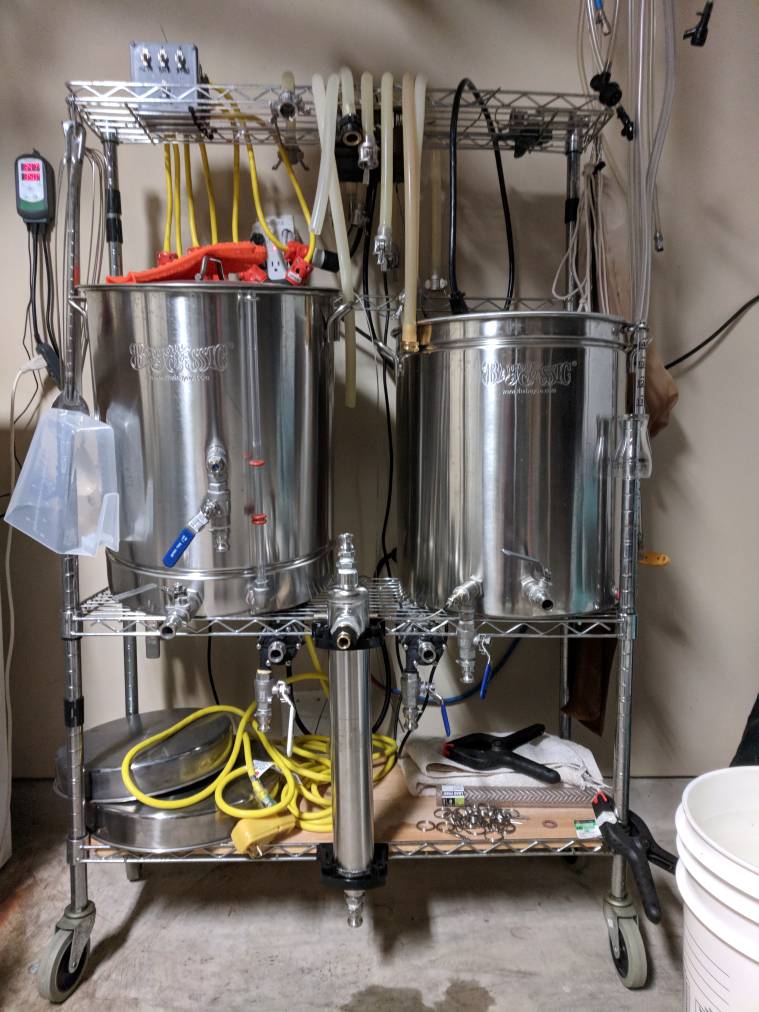Here's a pic of my set up, no hoses attached, but you get the picture [emoji3] It's about 36" wide, 16" deep, and maybe 66" tall with the casters. I roll it around to wherever I want to brew, which is always in the garage.
One 15.5 and one 16 gallon kettle, two pumps, one exchanger.
I run it in a counterflow HERMs for most normal sized batches, using the the external heat exchanger for mash temp control as opposed to a better mounted coil. I can also do single vessel or K-RIMS/Brutus, which I use for larger batches.
Yesterday I put together a price list for all the parts and pieces that would go into building this system. Minus the baker's rack, it's in the neighborhood of $1k.
This price is assuming you buy a pre built controller and the only holes you need to poke in your vessels are for the return lines, which is one per. Up high for the MT, down low for the BK/HLT. The most involved DIY part is drilling these holes, and it really is dead simple with a step bit or even easier with knockout punch.
Understand you want to go single vessel. I started with the same thing, stove top even. Then about 18 months ago I started doing some reading and realized a multi vessel approach was the only way I was going to be able to incorporate some much needed process changes, like underleting the mash and getting crystal clear wort to the BK. My approach to brewing is not for everyone, but I encourage you to read some of the professional brewing texts and keep some of their best practices in mind when deciding what to do. Clear wort matters, as well as hot side oxygen exposure.
Hope some of my ramblings help, or at least put you to sleep [emoji3] which is just as beneficial.
View attachment 546656




















































![Craft A Brew - Safale S-04 Dry Yeast - Fermentis - English Ale Dry Yeast - For English and American Ales and Hard Apple Ciders - Ingredients for Home Brewing - Beer Making Supplies - [1 Pack]](https://m.media-amazon.com/images/I/41fVGNh6JfL._SL500_.jpg)









